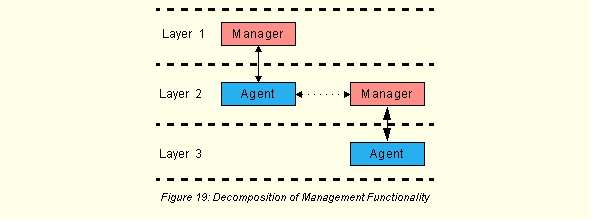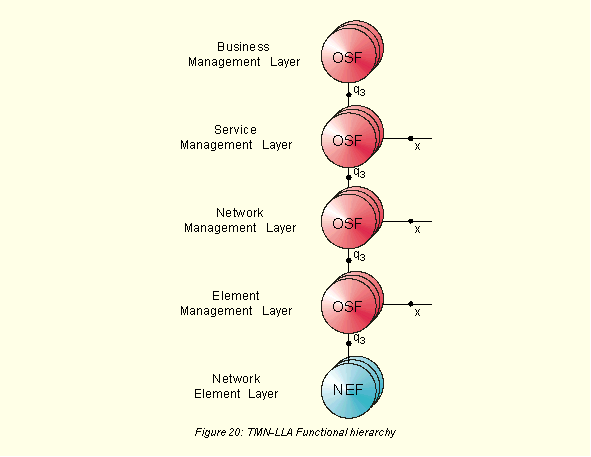TMN recognizes that, corresponding to human society, a hierarchy of management responsibilities exist. Such hierarchies can be described in terms of management layers; the architecture that describes this layering is called the Logical Layered Architecture. Over time the concept of management layers has become the most important concept of TMN; it appeared as appendix in the 1992 version of M.3010 and moved into the main text of the 1996 version. The ideas behind this architecture were described first in 1989 by BT [10] as part of its Open Network Architecture (ONA). BT uses the name structural architecture for this model [11]; the name responsibility model is being used too.
To deal with the complexity of management, the management functionality with its associated information can be decomposed into a number of logical layers. The principle of such layering is shown in Figure 19. At the border between Layer 1 and 2 the management view of Layer 2 is presented to Layer 1; this view is presented in the form of management information that is contained within the agent at Layer 2. Note that the management view that is presented to layer 1 need not unveil all details of layer 2; the agent at layer 2 will only provide those pieces of management information that are necessary at layer 1. The principle of layering can be applied in a recursive fashion; the management view of Layer 3 can be presented to Layer 2 etc.

A usual decomposition of management functionality leads to the following layers of abstraction:
These layers, including their function blocks and reference points, are shown in Figure 20.
